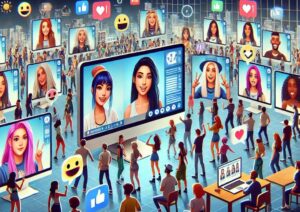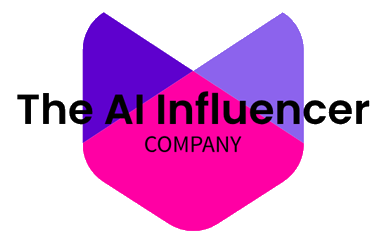E-commerce has opened up endless possibilities for showcasing products online, but the limitations of traditional photography have held some brands back. Real human models are expensive, inconsistent, and restrictive. That’s why forward-thinking e-commerce businesses are now embracing virtual models as the future of product visualization.
This article will explore the game-changing benefits virtual models bring to e-commerce. We’ll examine how they enable customization, cost savings, speed, consistency and inclusion for online businesses.
Read on to learn how virtual models can take your product pages to the next level.
More Flexibility and Control
With virtual models, e-commerce retailers have much more flexibility and control compared to human models. It is easy to make:
- Body customization – shape, size, proportions, etc.
- Facial adjustments – bone structure, complexion, makeup
- Hair – style, color, texture
- Outfit matching – model fits clothes instead of the reverse
This full customizability allows brands to showcase their products in the best possible way. Some examples include:
- Emphasize stretch in jeans on curvy legs
- Lengthen the model’s neck to highlight a statement necklace
- Lighten skin tone to complement pastel clothing
- Exaggerate height in heels to sell the extra inches gained
The possibilities are endless when full customization of virtual models is possible.
Lower Costs
The data suggests that human models tend to be more expensive than virtual (AI) models for photoshoots. The cost of photoshoots involving human models compared to virtual models reveals significant differences, especially in terms of financial efficiency and logistical simplicity.
The below table presents the cost comparison between human and virtual models.
| Aspect | Human Models | Virtual Models |
| Hourly Rates | $50-$250 | Not applicable (Virtual models have fixed cost structure) |
| Agency Fees | 20% extra on top of hourly rates | Not applicable |
| Average Cost Per Shoot | Ranges from $6,178 to $17,952 depending on location | $2,000 for 5 products |
| Additional Costs | Costs include studio rental, equipment, and transportation | Costs related to studio rental, equipment, and transportation are eliminated |
| Flexibility and Customization | Limited by logistical and financial constraints | Offers limitless flexibility and customization options |
| Pricing Structure | Variable, depending on various factors such as model, location, and agency | Fixed, regardless of location |
These findings suggest that for businesses operating in the fashion and modelling industry, especially those frequently updating their product visuals, leveraging virtual models and photography can transform cost structures and operational efficiencies.
Brands can thus allocate resources more strategically, focusing on creative and marketing efforts that enhance brand engagement and customer experience.
Faster Shoot Times
Real model shoots require significant coordination, scheduling, and production time. With virtual models, product images can be generated extremely quickly without delays.
Traditional Photoshoot Timeline
Planning and Preparation:
- Studio Booking: Requires scheduling at least 2 weeks in advance; popular studios need booking months ahead.
- Team Hiring: Assembling a photography team including photographers, assistants, stylists, and makeup artists, aligning everyone’s availability, typically takes at least 1 week.
- Equipment Rental: Securing additional equipment like lighting and props may take a few days.
- Model Booking: Models need to be booked 2-4 weeks in advance, with wardrobe sizes provided.
Shoot Day (8-10 hours):
- Travel: Commuting to the studio, factoring in possible delays.
- Setup: 1-2 hours for arranging the set.
- Hair and Makeup: 1-2 hours for styling models, with touch-ups between sets.
- Outfit Changes: 15-20 minutes per look.
- Shooting: 10-15 minutes per look, aiming for 2-3 shots per outfit.
- Wardrobe Issues: Possible delays due to fit or missing accessories.
Post-production:
- Image Editing: At least 1 week for selection and editing.
- Model Release Forms: Securing permission to use photos.
Virtual Photoshoot Timeline
Preparation:
- 3D Model Customization: Can be adjusted in 1 hour or less.
- Dressing Model: Under 1 hour per look for adding product images.
- Studio Scene Setup: 30 minutes to 1 hour.
Shooting:
- Image Rendering: Instant production of final images.
- Pose/ Angle Adjustments: Immediate results.
- Product Swaps: Changing looks in seconds.
Post-production:
- Output Specifications: Fast batch processing.
- Model Release Forms: Not necessary as there’s full ownership of virtual models.
With virtual there are no delays for services, travel, or production. New products can be visualized right away to get to market faster.
Consistent Brand Imaging
Using virtual models ensures complete consistency across all product imagery and brand touchpoints. With human models, maintaining cohesion is challenging.
Human models change physically over time:
- Weight fluctuations
- Tanning, sun damage
- Aging over months/years
Their performance also varies from shoot to shoot:
- Energy and moods fluctuate
- Difficult to match expressions precisely
- Posing proficiency varies
There is also a lack of control over styling factors like makeup, hair, and clothing fit.
This means recreating a consistent look is impossible. Images feel disconnected because real models are inconsistent.
In contrast, virtual models remain identical every single time. Posing and expressions can be perfectly replicated by saving digital presets. There is absolute control over model styling and adjustments in post-production.
The result is hyper-consistent brand imaging, unachievable with humans. Customers develop familiarity with the consistent face of the brand.
Inclusive Representation
Traditional modeling lacks diversity. Virtual models enable inclusive representation of all groups.
Limitations of human models:
- Minimal ethnic diversity
- Narrow range of body types
- Focus on women aged 18-30
- Lack of disability representation
This leads to underserved audiences feeling excluded.
Virtual models have no limits when showcasing diversity:
- A broad range of ethnic features
- Any body size, shape, ability
- Specific adjustable ages
- Mimic disabilities/conditions
Virtual models allow underrepresented groups to finally see themselves in marketing materials and e-commerce. Shopping feels more welcoming and inclusive.
Use Cases and Examples
| Category | Use Case |
| Fashion and Apparel | Virtual models wearing the latest clothing and accessories aligned with fashion trends. Models can strike dramatic poses suited to haute couture pieces. |
| Jewelry and Watches | Intricate jewelry and watches visualized on virtual models. Models’ hands and poses can draw focus to featured products. |
| Makeup and Skincare | Close-up shots displaying makeup products applied with perfect technique. Consistent model faces to showcase skincare results. |
| Furniture and Home Goods | Virtual spaces are decorated with furniture, bedding, towels, and more. Models interacting with products demonstrate utility. |
| Sports and Outdoors | Athletic clothing and equipment are being used by models. Outdoor gear suited for camping, hiking, and travel situations. |
There are many use cases where virtual models can elevate an e-commerce brand’s product photography. Fashion, beauty, lifestyle, specialty retailers can all benefit from implementing virtual model technology.
The Future of Virtual Models in E-commerce
The use of virtual models in e-commerce is still in the early stages but rapidly gaining traction. As the technology improves, adoption will accelerate across all retail sectors. Here are some predictions for the future of virtual models:
- More realistic detail and interactivity – As graphics processing power increases, virtual models will become indistinguishable from reality. Shoppers may be able to interact with them or see products in use through AR/VR.
- Rise in creation platforms – Dozens of startups will compete to be the top virtual model creation platform. Some will be DIY for easy custom models, others enterprise-level with libraries of fully rigged models.
- Adoption across industries – Virtual models will expand beyond fashion/apparel into jewelry, accessories, furniture, automotive, and technology products.
- Hybrid approaches – Some brands will blend virtual and human models. They will scan real people to create vivid digital doubles for flexibility.
- Custom model personalization – Shoppers will be able to customize models to their likeness or create custom digital avatars. This will further enhance the shopping experience.
- Diversity mandates – As diverse representation becomes crucial for e-commerce, virtual models will be mandated to showcase inclusive castings.
- New applications emerge – Virtual influencers for social campaigns and virtual store staff will emerge, powered by AI and machine learning.
- Cost savings quantified – As adoption matures, the cost savings and ROI of virtual models will be quantified.
The next 5-10 years will see transformative growth in utilizing virtual models for e-commerce. This technology will ultimately become standard practice as the benefits and capabilities evolve. Brands that embrace it early will have a competitive advantage.




